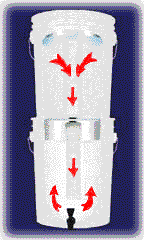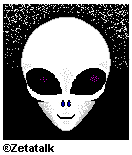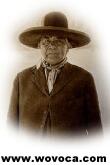|
||||||||||||||||||
Press CTRL+D to bookmark this page! |
||||||||||||||||||
 |
||||||||||||||||||
| Click here for
EarthMotherCrying Wallpaper |
||||||||||||||||||
| Bear River Was an Army Massacre | ||||||||||||||||||
|
||||||||||||||||||
|
||||||||||||||||||
|
|
||||||||||||||||||
|
||||||||||||||||||
|
||||||||||||||||||
|
||||||||||||||||||
|
||||||||||||||||||
Bear River Was Army Massacre Newly discovered eyewitness account details slaughter of Shoshoni Indians BY CHRISTOPHER SMITH SALT LAKE TRIBUNE
A forgotten eyewitness account of an 1863 military attack on a Shoshoni Indian camp has been brought to light after being recovered by Utah historian and Salt Lake Tribune reporter Harold Schindler shortly before his death. In the last article he wrote before dying of a heart attack in December 1998, Schindler detailed the contents of a heretofore-unpublished map and firsthand description of the attack at Bear River. The story is contained in the new issue of the Utah Historical Quarterly magazine, the state Division of History's scholarly journal. The newly rediscovered historical evidence obtained by Schindler from a California document collector is significant in many respects. Most important, it provides the first empirical proof of what historians have gradually come to accept: that the event long known as the Bear River "battle" was in fact a massacre, with soldiers killing hundreds of Shoshoni men, women and children even as they sought to surrender. The newly found four-page manuscript was written by a participant in the massacre, Sgt. William L. Beach of Company K, 2nd Cavalry Regiment, California Volunteers, under the command of Col. Patrick Edward Connor. Beach apparently penned the account and drew a detailed map showing troop movements, fortifications and the path of retreat 16 days after the massacre while he was recovering from frostbitten feet at Camp Douglas in Salt Lake City. "With a deafening yell the infuriated Volenteers [sic] with one impulse made a rush down the steep banks into their very midst when the work of death commenced in real earnest," Beach wrote in describing how the battle degenerated into a massacre as the Army stormed the Shoshoni camp. "Midst the roar of guns and sharp report of Pistols could be herd [sic] the cry for quarters but their [sic] were no quarters that day." Coming to grips with a Mormon-urged U.S. military operation that turned into an attempt to wipe out the entire Northwest Band of Shoshoni Indian tribe has been a long, painful process for residents of Utah and southern Idaho. On Saturday, the 137th anniversary of the massacre will be marked by the Friends of the Native Americans of Northern Utah with a gathering at the Franklin County Senior Citizens Center in Preston, Idaho, at 2 p.m., followed by a visit to the massacre site on the outskirts of Preston where participants will gather to remember those who perished. "We've cut three maple tree branches from up in the mountains we'll use to make a tripod where people canhang flowers, feathers and remembrances on at the massacre site," said Kerry Brinkerhoff of Tremonton, one of the group's organizers. "We just want to let people see there are those who care about what happened there and don't want the truth forgotten." The story of what happened on the frosty morning of Jan. 29, 1863, at a bend in the Bear River 140 miles north of Salt Lake City has had many versions. A four-sided stone monument that stands along U.S. 91 at the site best illustrates the conflict. Plaques on three faces of the monument each carry different casualty counts, alternately referring to it as a conflict, battle and massacre. A fourth side, offered to the Shoshoni tribe for their own plaque, remains blank. But perhaps the most accurate account of the clash was put forward 15 years ago by renowned University of Utah emeritus professor of history Brigham Madsen in his definitive book, The Shoshoni Frontier and the Bear River Massacre. Madsen was the first recognized historian to expose what had long been portrayed as a valiant battle by the U.S. Army was in fact an attempt at genocide, a lopsided massacre bent on exterminating 250-400 Shoshoni under the command of a colonel who wanted to make a name for himself. Some military historians who refused to accept that trained members of a regular army would perpetrate such a slaughter roundly criticized Madsen. But his research has held up to such challenges, and now, with the discovery of Beach's personal account of the attack, Madsen's conclusion that a massacre, not a battle, occurred at Bear River is unequivocal. "What I call the 'old military' has never accepted it and some never will," said Madsen, who worked with Schindler to obtain the document. "This was the bloodiest massacre in the history of the Old West, no doubt about it, and that's not something to be proud of. "The other problem is the Mormon people at that time were very much in favor of the military doing this, something that has always been downplayed by whoever runs church history," said Madsen. "You just have to look at the statement made by the secretary of the Logan [LDS] Ward after the massacre who said, 'This was the intervention of the Almighty.' Again, you have to place it in the proper perspective. The way people thought in the 1860s was the only good Indian is a dead Indian." Madsen first learned of the Beach manuscript in early 1997 when he was contacted by Jack Irvine of Eureka, Calif., who had read an Associated Press story about Madsen's career. A year earlier, Irvine, who collects vintage documents and photographs of the Pacific Northwest, had discovered the Beach manuscript tucked into an envelope at an estate sale. Thinking it referred to the Bear River in California's Humboldt County, Irvine bought the document and filed it away. Upon reading about Madsen's work on the Bear River massacre, Irvine recognized the significance and offered to trade the Beach manuscript for documents of the variety he collects. "Jack would not take money, he wanted to trade, so I went to the Special Collections people at the [University of Utah's] Marriott Library to see if they could find something he would be interested in and they just couldn't come up with anything," said Madsen. "So finally I asked Hal [Schindler] to get involved and he had a document that he was able to trade straight across for this manuscript. Hal then came to me and said, 'Let's write something on this together,' and I said, 'No, you go ahead and do it,' which I'm glad I did because it turned out to be the last thing Hal wrote before he died." Schindler's interest in the Bear River massacre stemmed from his research on Orrin Porter Rockwell, the pioneer Mormon convert, gunslinger and accused murderer who guided Connor's troops to the Shoshoni encampment near Preston. First published in 1966, Schindler's Orrin Porter Rockwell: Man of God, Son of Thunder is the best-selling University of Utah Press book ever. Schindler also apparently wanted to ensure that Beach's manuscript became part of Utah's historical record. "Sgt. William L. Beach may have faded away as old soldiers do," Schindler writes with his trademark flourish in the new Utah Historical Quarterly story, "but his recollections of that frigid and terrible day in 1863 at Bear River will now live forever in Utah annals." But Beach's recollections -- reprinted in their entirety in the Quarterly -- are a chilling confirmation of one of the ugliest chapters in Utah history. "The fight lasted four hours and appeared more like a frollick [sic] than a fight," Beach wrote Feb. 14, 1863. "The wounded cracking jokes with the frozen, some frozen so bad that they could not load their guns [and] used them as clubs. No distinction was made between Officers and Privates, each fought where he thought he was most needed." Historians who have researched the Bear River massacre believe this newly recovered primary source material provides an important glimpse into the attitude of the soldiers. "They had signed up to go to the Civil War and they had wound up in Utah, seeing no action, were clearly disappointed and the desire to get out and kill somebody was prevalent," said National Park Service Supervisory Archaeologist Cathy Spude in Santa Fe, N.M., who prepared a detailed study of the Bear River Massacre site to recommend it for federal protection. "To call it a 'frolic,' my goodness, when I read that sentence, it is such an emotionally charged word. That is going to be very painful to the Shoshoni descendants. "But to me, the most interesting quote in the manuscript is the section about the officers and privates fighting side by side with no distinction," said Spude. "That showed me that everybody had orders to keep shooting and killing until it was done. Officers had no control or had deliberately given up control, and had made a choice not to pull the troops back when it was clearly a victory and the Indians were trying to surrender." Beach's account also puts the number of Indian dead at 280, higher than Madsen's 250 and lower than the 368 recounted by some civilian observers. Even with the lowest recorded body count of 240, the Bear River massacre is significantly higher than other Old West Indian massacres, such as Sand Creek, Colo. (at least 130 Cheyenne killed Nov. 19, 1864); Marias River, Mont. (at least 173 Piegan Blackfeet killed Jan 23, 1870) and Wounded, Knee S.D. (at least 146 Lakota Sioux killed Dec. 29, 1890). For nearly 15 years, tribal members and residents in southeastern Idaho and northern Utah have lobbied for federal protection of the Bear River massacre site, with the current proposal making it a unit of the National Park Service. The land where the bodies of slain Indians -- including infants whose heads were clubbed as they suckled from their mothers -- were left unburied, is a hodgepodge of private ownership, where cattle graze and mobile homes squat. "This is a holy, sacred place to the descendants of the Indians who were killed there, and for that reason alone the federal government should ensure the land is protected from development," said Madsen. Brinkerhoff's organization recently sent petitions to U.S. Sens. Orrin Hatch, R-Utah, Larry Craig, R-Idaho, and Ben Nighthorse Campbell, R-Colo., urging them to take congressional action to protect the Bear River massacre site and make it a national historic monument under the Park Service. "As far as we can tell, there has been no bill put forth whatsoever," said Brinkerhoff. "Originally, the tribal members wanted the land back as their own but they have come to accept that the Park Service will do the best to protect it and tell the whole story about what happened there."
http://www.sltrib.com/01242000/utah/20260.htm
|
||||||||||||||||||
|
||||||||||||||||||
Shapeshift to WOVOCA! to view this site's main page |
||||||||||||||||||
|
||||||||||||||||||
|
||||||||||||||||||
|
||||||||||||||||||
|
||||||||||||||||||
|
||||||||||||||||||








![[Image]](pict41.jpg)
![[Image]](pict40.jpg)
![[Image]](pict43.jpg)